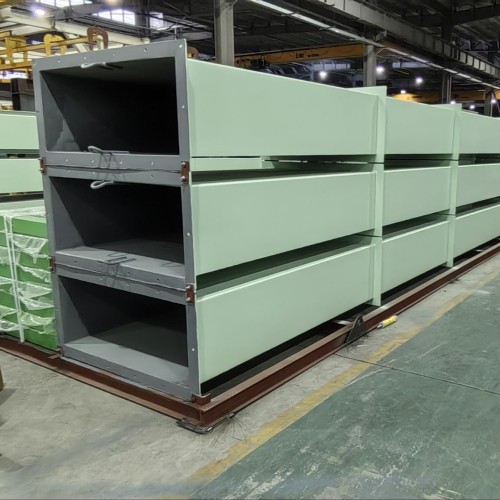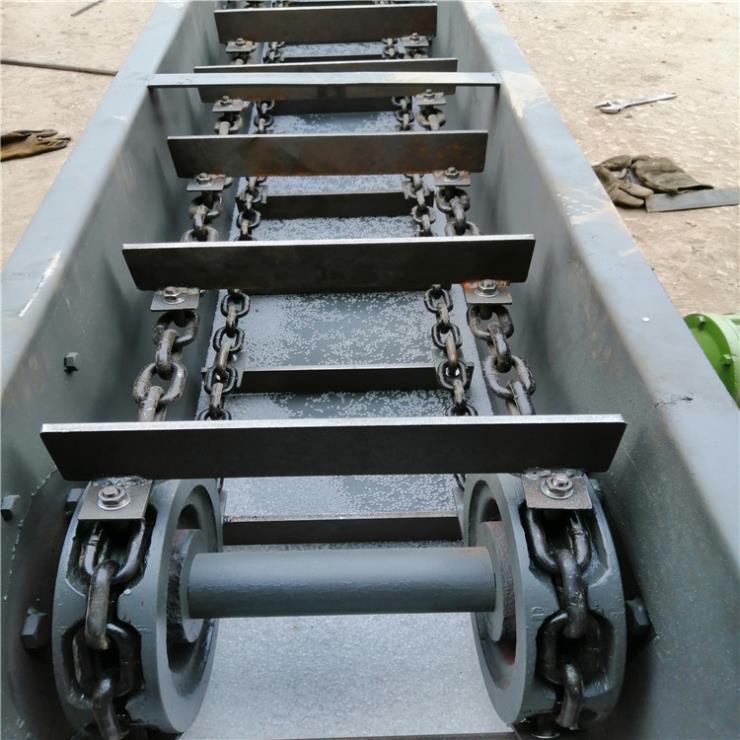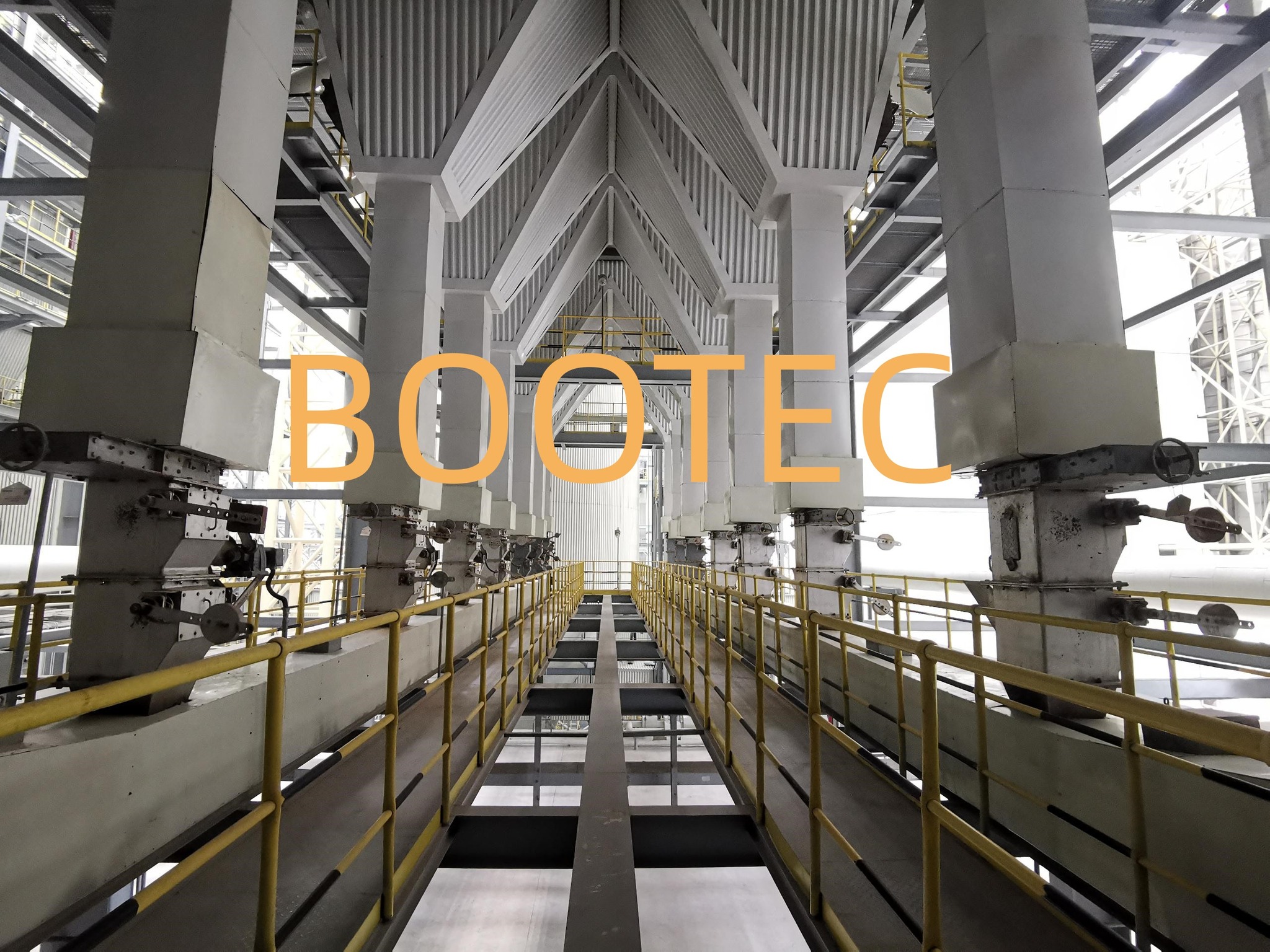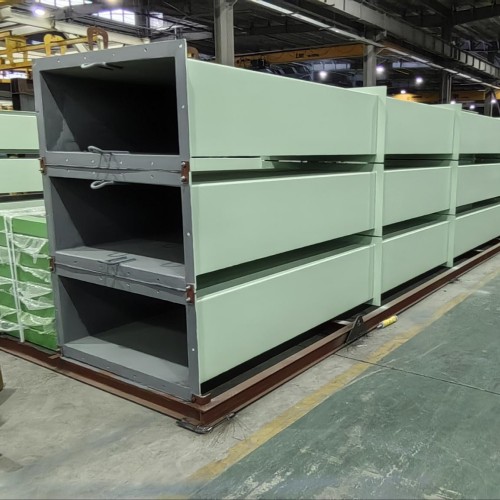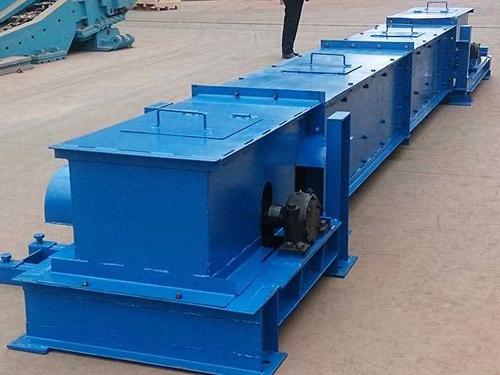
China Design En Masse Conveyor Drag Scraper Chain Conveyor Forging Chain Type Buried Scraper Conveyor
China Design En-Masse Conveyor, Drag Scraper Chain Conveyor, and Buried Scraper Conveyor
In power plants, particularly those handling bottom ash and fly ash, conveyors are vital for the efficient transport of waste materials like bottom ash, slag, and fly ash. Several types of ash handling conveyors are used, including En-Masse Conveyors, Drag Scraper Chain Conveyors, and Buried Scraper Conveyors. These systems can be specifically designed for high-capacity, reliable operations, especially in industrial applications like waste-to-energy plants and coal-fired power plants.
1. En-Masse Conveyor (Chain Conveyor)
An En-Masse Conveyor is designed to handle bulk materials such as bottom ash and fly ash efficiently. It is also used in energy-from-waste plants and coal-fired plants for continuous and effective material transport.
- Design Features:
- Conveyor Chain: The en-masse conveyor uses a continuous chain or belt to move material horizontally or at an inclined angle. The material is moved in the space between the chain and the sidewalls of the trough, ensuring maximum utilization of available space and reducing the overall system footprint.
- High Capacity: Ideal for handling large volumes of material, including both fine and coarse ash.
- Dust Control: Effective in controlling the release of airborne particles, making it suitable for handling fine fly ash or hot bottom ash.
- Material Flexibility: Suitable for various types of ash including bottom ash, fly ash, and slag.
- Applications:
- Bottom Ash Handling: These conveyors are used to transport hot bottom ash from the combustion chamber to a cooling area or storage unit.
- Fly Ash Handling: They can be adapted to convey fly ash, particularly where dust control and safe handling are required.
2. Drag Scraper Chain Conveyor
The Drag Scraper Chain Conveyor is commonly used for transporting bottom ash, slag, or other heavy materials in power plants. The system uses a chain and scraper mechanism to drag ash or other materials through a trough.
- Design Features:
- Chain and Scrapers: The drag scraper system includes a continuous chain that pulls scrapers to move the material along the conveyor trough. This mechanism works well for coarse, dense materials like bottom ash.
- Heavy-Duty Construction: Built to handle hot, abrasive, and high-temperature materials, drag scraper chain conveyors are highly durable and require minimal maintenance.
- Efficiency: Suitable for continuous transport of material, especially when reliability and heavy-duty capacity are important.
- Design Variations: The chain may be forged to offer increased strength, enhancing its capacity to handle high temperatures and tough conditions.
- Applications:
- Hot Bottom Ash Transport: Drag scraper conveyors are commonly used to move hot bottom ash from the furnace to a cooling and storage area.
- Coal or Biomass-fired Boilers: They are often used in power plants to carry heavy ash and slag produced from combustion.
3. Buried Scraper Conveyor
The Buried Scraper Conveyor is similar to the drag scraper conveyor but is designed to operate underground or in a buried trough. The buried configuration allows for easy integration into systems with space constraints, particularly where underground transport of material is needed.
- Design Features:
- Buried Design: The conveyor is fully enclosed and buried beneath the ground level, which prevents dust and ash from escaping into the atmosphere. This makes it highly effective for conveying materials like hot bottom ash in a controlled, dust-free environment.
- Continuous Operation: Similar to drag scraper conveyors, these systems provide continuous material transport with minimal downtime.
- Durable Chain Design: The chain and scraper system is robust, ensuring longevity in harsh operating conditions, especially in high-temperature and abrasive environments.
- Dust Suppression: Enclosed designs prevent the spread of ash particles, making it a cleaner alternative to traditional open conveyors.
- Applications:
- Heavy-duty Ash Handling: These conveyors are typically used in bottom ash handling systems where the material needs to be transported without exposure to the surrounding environment.
- Waste-to-Energy Plants: Used in the transport of incinerated ash and other byproducts, ensuring a closed-loop system for better control of emissions.
Forged Chain Design for Conveyor Systems
In many conveyor systems, especially in the drag scraper and buried scraper conveyors, the chain plays a critical role in the system’s overall durability and effectiveness. Forged chain links offer several advantages:
- Strength and Durability: Forged chains are made by heating steel and shaping it under pressure, which makes the material denser and more robust than cast chains. These chains are designed to handle high temperatures and heavy loads without breaking.
- Resistant to Abrasion: Since bottom ash and slag can be abrasive, the forged chain is highly resistant to wear, extending the service life of the conveyor system.
- High Temperature Resistance: In biomass and coal-fired power plants, chains must withstand high temperatures. Forged chains are designed to operate effectively under extreme heat conditions without degradation.
Design Considerations for Ash Handling Conveyor Systems in China
China has a significant market for ash handling systems, particularly with its large number of waste-to-energy plants and coal-fired power plants. The design of these conveyors takes into account several factors:
- Capacity: Conveyor systems are designed to handle high volumes of ash, whether in the form of fine fly ash or coarse bottom ash.
- Environmental Concerns: Dust control is a major concern in power plants, especially when handling fly ash. Conveyors are designed with enclosed systems and dust suppression technologies to prevent environmental contamination.
- Customization: In China, there is a demand for custom-designed solutions that can handle the specific characteristics of different fuels and the ash they produce (e.g., coal, biomass, waste).
- Energy Efficiency: Conveyor systems are designed to be energy-efficient, especially as many power plants are focusing on reducing operational costs and increasing sustainability.
- Compliance with Standards: Conveyor systems must meet national standards for safety, environmental compliance, and performance, ensuring that the equipment is reliable and safe for continuous operation.
Conclusion
- En-Masse Conveyors, Drag Scraper Chain Conveyors, and Buried Scraper Conveyors are essential components for efficient bottom ash and fly ash handling systems in power plants, particularly in China’s energy sector.
- The design of these systems focuses on handling high-capacity, abrasive materials with high reliability and efficiency, often incorporating forged chain designs for durability.
- Proper handling of fly ash and bottom ash ensures compliance with environmental standards, improves operational efficiency, and reduces maintenance costs.
Would you like to discuss any specific design or model for your ash handling system, or need more details on these conveyors?
